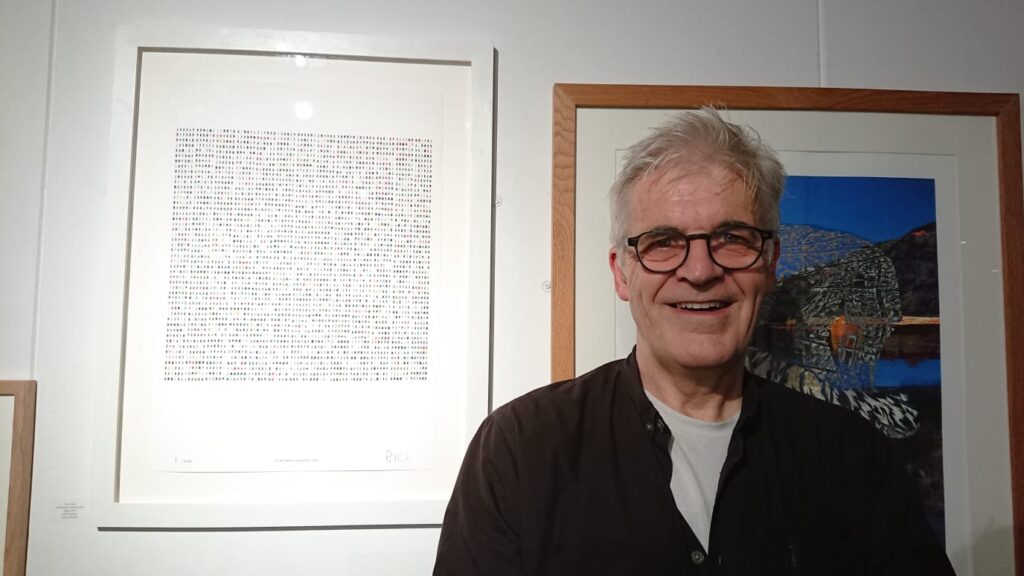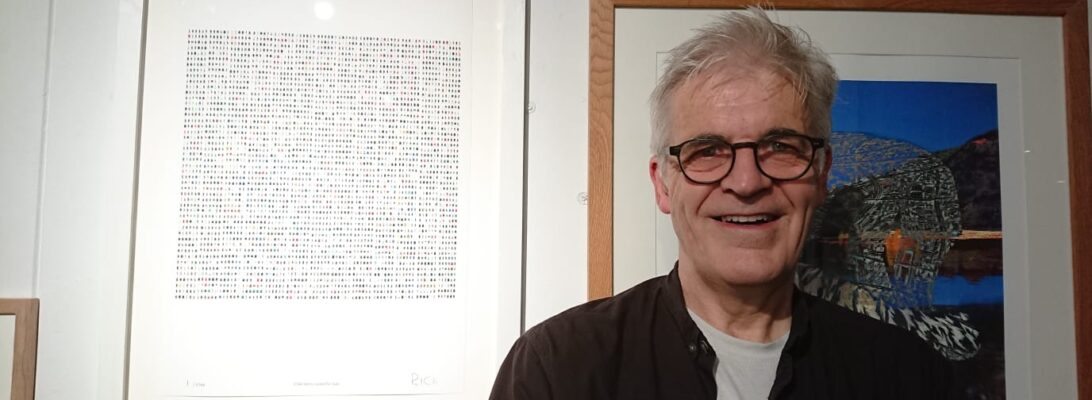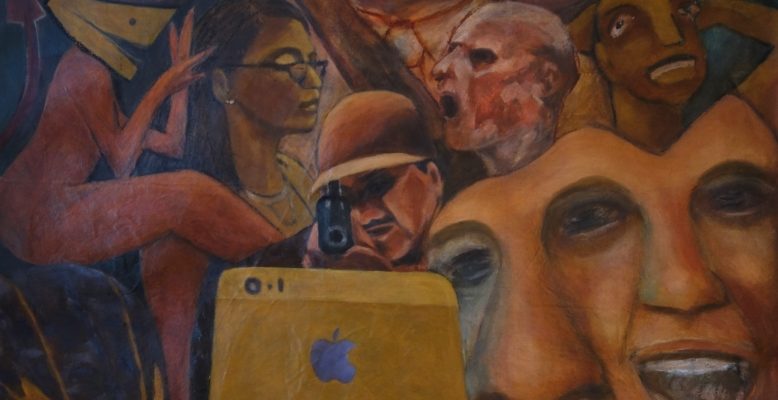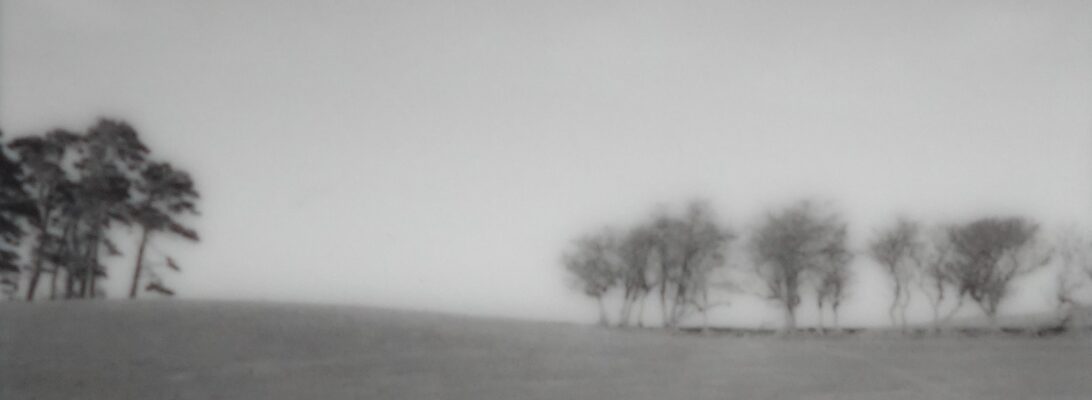My latest completed work has the rather unglamorous title ‘3477 Items listed for sale’. The image derived from an interest in the way the internet is influencing and changing the way we live. The scale and accessibility of resources we now have to can enrich us immensely by giving access to more news, analysis and knowledge than ever before. It provides choices as consumers too, provided we have the wherewithal, to select the best match to our desires at the keenest price, from anywhere in the world without leaving your house. So forinstance, if we look on one website, Amazon, for a women’s coat or jacket, we’d find over 10,000 options available to us. My work shows one third of those listed.
But there are also negatives to all this. The spread of disinformation or ‘fake news’ causes confusion and worse, and the knowledge internet service providers now have on their users can be dangerous if it is used for the wrong purpose and people. And even the increase in consumer choice has its downside – the move to ever cheaper production and delivery is accentuated in order to compete, giving rise to lower wages, zero hours contracts and the gig economy. It is truly a second industrial revolution, with the same impact as the first, which is to increase availability of goods but at the expense of greater division of wealth in society, between those that control and those that service.
Consumerism too has now affected the art market. Previously art had been more about status with works commissioned by the wealthy and powerful. Art is now seen more and more as commodity and investment, and marketed as such. This is referenced in the fact that edition size for the print is 3477, highlighting that my work is just another product like the coats shown in the image.

Masters Print Exhibition at Bankside Gallery








